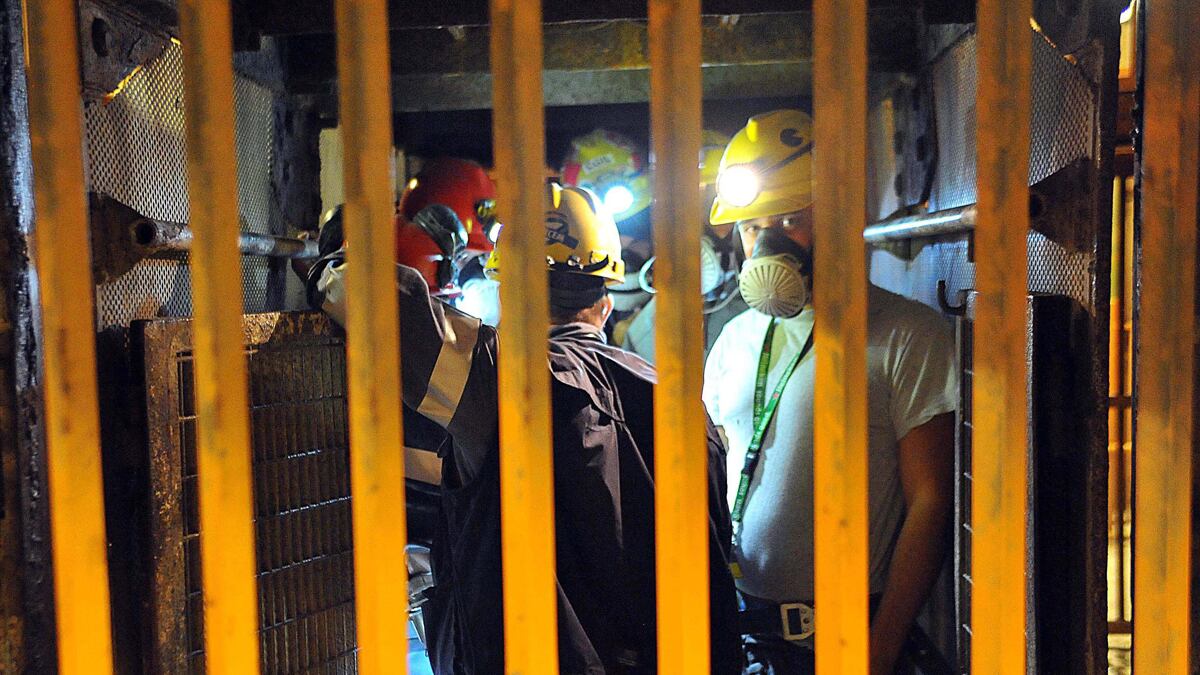Hours before 120 coal miners barricaded themselves 1,300 feet deep into the Carbosulcis di Nuraxi Figus coal mine on the Italian island of Sardinia, they filled the cavity with 770 pounds of dynamite. Workers outside the mine then dumped piles of coal at the entrance to effectively trap them inside. “We have been breaking our backs for years to take out this coal that no one buys anymore because of the economic crisis,” said miner Ivo Porcu from inside the mine in an interview aired on Italian television. “We are tired of it. If they close this mine, we will die inside.”

The miners are protesting plans by the Italian government to cut funding for a project that would have converted the mine into a lucrative carbon-capture facility to house carbon emissions to counter the effects of global warming. Without the conversion, which would cost the government €200 million and double the work force, the mine will have to limit production and eventually close, putting 463 jobs at risk. On Aug. 31, the Italian government will hold an emergency meeting in Rome to discuss the mine’s future. If it goes ahead with plans to scrap the conversion, the men and women inside say they are prepared to stay underground. In 1995, around 50 miners stayed underground for over 100 days in a similar protest.
Miner-union spokesperson Sandro Mereu says that they are prepared to “wage a war” if the government goes ahead with plans that will result in the mine’s closure. He told The Daily Beast by phone that the government is not taking into consideration the number of job losses each budget cut carries in the name of austerity. “We are suffering already,” he says. “Closing this mine will destroy this community and the families of almost 500 people.”
The miner crisis is the latest in a series of austerity-driven protests across the island of Sardinia. On Aug. 24, 200 workers at the Alcoa aluminum factory staged a protest by blocking both the Cagliari-Elmas airport and the city’s busy seaport. Several workers were injured when they jumped into the water to try to stop a massive car ferry from docking. The Alcoa workers were protesting the government’s closure of a smelting plant that will result in putting over 300 people out of work. The company is currently looking for a buyer to save the plant and allow the workers to keep their jobs. If no one saves the plant, it will be closed by the end of October.
Italy is under increasing pressure to balance its books to stave off a major economic crisis like that in neighboring Greece or Spain. Mario Monti, a technocratic leader who was appointed last October to guide the country through tough-love reforms after Silvio Berlusconi’s dramatic ouster, is implementing €20 billion in austerity cuts that will see the continuing closure of many state-funded entities. Closures of schools, hospitals, and mines and factories like the ones in Sardinia are the direct results of the austerity cuts. “I work every day to grapple with the crisis,” Monti told business and political leaders last week at a conference in Rimini. “And I see a miracle happening every day. We will emerge out of this crisis stronger at the end.”
But not everyone may agree. On Aug. 19, 54-year-old Angelo di Carlo died after setting himself on fire in front of Rome’s Parliament palace the week before in the latest austerity suicide to underscore the human toll of economic crises. Di Carlo had lost his temporary job after austerity cuts closed the factory where he worked in southern Italy. He left a suicide note asking the government to think before it made cuts that put people out of work. He also left a note to his son along with €160, which he said was all the money he had left. “I hope my actions cause you to pause to reflect on the outcome of your decisions,” he wrote in the note addressed Monti’s government. Whether it does that will be clear on Friday, when it meets to discuss the future of the Sardinian mine.






